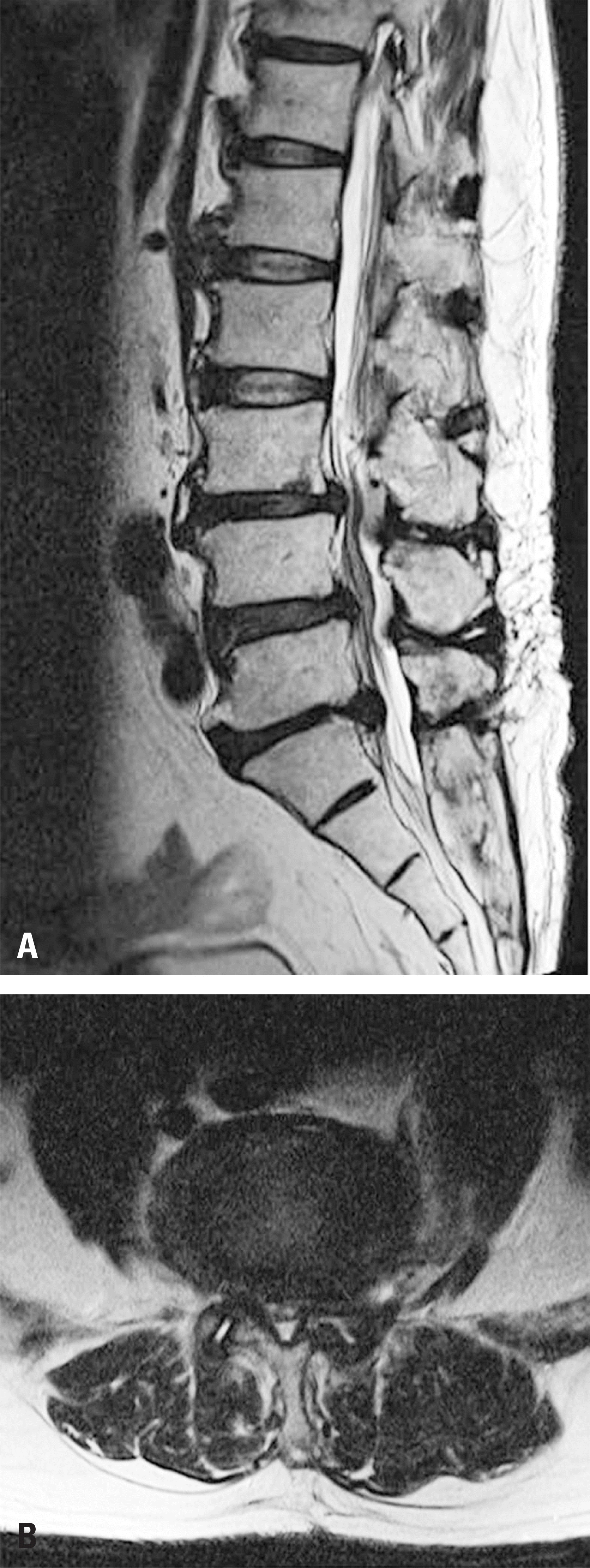Abstract
Objectives
We report a case of meningitis combined with paraspinal infection in a patients who underwent numerous surgeries for and repetitive procedural treatment of the spine.
Summary of Literature Review
In patients with a history surgical and repetitive procedural treatment of the spine, one symptom of infection may be a fever with localized pain or tenderness along the spine.
Materials and Methods
A 69-year-old man was hospitalized due to pyrexia and myalgia. Eight years ago, he underwented spine surgery. After that, the patient underwent spinal intervention more than once per week in another hospital due to remaining pain. One week before his visit to the emergency room, myalgia and aggravation in the lower back arose. However, a paraspinal infection was not detected in a non-enhanced MRI. One day after admission, the patient showed signs of meningeal irritation signs and the the patient's mental state suddenly deteriorated. An emergency cerebrospinal fluid analysis showed typical findings of bacterial meningitis. An enhanced MRI of the brain showed pachymeningeal enhancement. An enhanced MRI of the spine showed a small abscess formation on the left paravertebral back muscle, and bilateral psoas muscle.
Go to : 
REFERENCES
1. Choi IH, Lee HK. Treatment of non-tuberculous infection of the spine. J Korean Orthop Assoc. 1984; 19:472–82.
2. Goodman BS, Posecion LW, Mallempati S, et al. Complications and pitfalls of lumbar interlaminar and transforaminal epidural injections. Curr Rev Musculoskelet Med. 2008; 1:212–22.

3. Cherubin CE, Corrado ML, Nair SR, et al. Treatment of Gram-negative bacillary meningitis: role of the new cephalosporin antibiotics. Rev Infect Dis. 1982; 4:453–64.

4. Landesman SH, Corrado ML, Shah PM, et al. Past and current roles for cephalosporin antibiotics in treatment of meningitis. AmY Med. 1981; 71:693–703.

5. Olson DA, Hoeprich PD, Nolan SM, et al. Successful treatment of Gram-negative bacillary meningitis with Moxa-lactam. Ann Intern Med. 1981; 95:302–5.

6. Stratton CW. Serratia marcescens. Infect Control. 1983; 4:469–71.
7. Chang CJ, Ye JJ, Yang CC, et al. Influence of Third-generation Cephalosporin Resistance on Adult In-hospital Mortality From Post-neurosurgical Bacterial Meningitis. J Microbiol Immunol Infect. 2010; 43:301–9.

8. Wu YM, Hsu PC, Yang CC, et al. Serratia marcescens meningitis: Epidemiology, prognostic factors and treatment outcomes. J Microbiol Immunol Infect. 2013; 46:259–65.

9. Durand ML, Calderwood SB, Weber DJ, et al. Acute bacterial meningitis in adults: a review of 493 episodes. N Engl J Med. 1993; 328:21–8.
10. Sigurardottir B, Bjornsson OM, Jonsdottir KE, et al. Acute bacterial meningitis in adults: a 20-year overview. Arch Intern Med. 1997; 157:425–30.
Go to : 
 | Fig. 1.Magnetic resonance image from another hospital did not reveal paraspineal infection, or the epidural abscess. (A) T2 weighted saggital image. (B) T2 weighted axial image at the L4/5 level. |
 | Fig. 2.Enhanced magnetic resonance imaging (MRI) of the spine and the brain. (A) T1 weighted enhanced saggital image. (B) T1 axial axial image at the level of the L4/5, showed small abscess formation of the left paravertebral back muscle and the bilateral psoas muscle. (C) Axial brain MRI showed pachymeningeal enhancement. |




 PDF
PDF Citation
Citation Print
Print


 XML Download
XML Download